Facts about Fossil

Permineralization is a fossilization process that involves organic remains being to some degree infiltrated by minerals derived from the surrounding sediments or waters.

Permineralized fossils are among the most durable type of fossil, such as seen in petrified wood.

Geological processes such as erosion and subduction also destroy many fossils.

Some fossils consist only of skeletal remains or teeth; other fossils contain traces of skin, feathers, or even soft tissues.

Fossils (from Latin fossus, literally "having been dug up") are the mineralized or otherwise preserved remains or traces of animals, plants, and other organisms.

Some pseudofossils, such as dendrites, are formed by naturally occurring fissures in the rock that get filled up by percolating minerals.

One well-known occurrence of trace fossils from this period is the famous "Pipe Rock" of northwest Scotland.

The fossil evidence does support the view that species tend to remain morphologically stable during their time of earth, and that speciation events tend to take place in geologically short periods of time.

Fossils also reveal that organisms of increasing complexity have appeared on the earth over time.

Fossils also demonstrate that the history of life on Earth is measured in millions and even billions of years, versus the thousands advocated by young-earth creationists.

Asteriacites is the name given to the five-rayed fossils found in rocks, and they record the resting place of starfish on the sea floor.

The degree to which the remains are decayed when covered determines the later details of the fossil.

Such a fossil record is consistent with the theory of punctuated equilibrium as presented by Stephen Jay Gould and Niles Eldredge.

Trace fossils provide us with indirect evidence of life in the past, rather than the preserved remains of the body of the actual animal itself.

Trace fossils are those details preserved in rocks that are indirect evidence of life.

Fossil evidence that supports the view of species stability throughout their existence, and sudden appears of new species, is not problematic for the theory of descent with modification, but only with Darwin's concept of gradualism.

The fossil record also offers evidence of the theory of descent with modification—that organisms descend from common ancestors.

Fossils also reveal that there are ancient forms of organisms that no longer exist; in other word, that extinction is a fact.

The reason for this is that physical compression of the rock often causes distortion of the fossil.

Pseudofossils are visual patterns in rocks that are produced by naturally occurring geologic processes rather than biologic processes.

Fossils offer evidence that life on the earth is measured in millions and billions of years, rather than thousands as believed by young-earth creationists.

Fossil lineages from therapsid reptiles to mammals, between supposed land-living ancestors of the whales and their ocean-living descendants, and from an ancestral horse (Eohippus) to the modern horse (Equus) are reasonably well-represented.

Concretions, round or oval-shaped nodules found in some sedimentary strata, were once thought to be dinosaur eggs, and are often mistaken for fossils as well.

Small, soft bodied organisms living in localized areas and belonging to species that had a short existence are difficult sources of fossils.

Compression fossils, such as those of fossil ferns, involve chemical reduction of the complex organic molecules composing the organism's tissues.

In 2006, a fossil fish (Tiktaalik roseae) was found in northern Canada that appeared to bridge the gap between fish and tetrapods (four-legged vertebrates), looking like a cross between a fish and a crocodile.

The study of trace remains is called ichnology, which is divided into paleoichnology, or the study of trace fossils, and neoichnology, the study of modern trace remains.

Some of these worm castings are the only fossil record we have of these creatures.

A compression fossil is a fossil preserved in sedimentary rock that has undergone physical compression.

What fossil evidence does not support is the view of natural selection as the creative force of evolution (theory of natural selection).

Compression fossils are formed most commonly in environments where fine sediment was deposited, such as in river deltas, lagoons, along rivers, and in ponds.

Past life leaves some evidences that cannot be seen, but can be detected in the form of chemical signals; these are known as chemical fossils.
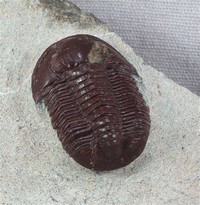
Fossilization is actually a rare occurrence because organic materials tend to decompose.

Perhaps the most spectacular trace fossils are the huge, three-toed footprints produced by dinosaurs.

The oldest types of tetrapod trace fossils date back to the Upper Devonian period and are found in Scotland, Pennsylvania, and Australia.
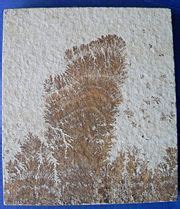
Other types of pseudofossils are kidney ore (round shapes in iron ore) and moss agates, which look like moss or plant leaves.

The best fossils of leaves are found preserved in layers of sediment that had been compressed in a direction perpendicular to the plane of the deposited sediment.
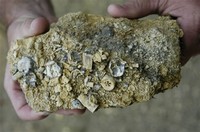
The best rocks in which to find these fossils preserved are clay and shale, although volcanic ash may sometimes preserve plant fossils as well.

Fossilized droppings, called coprolites, can give insight into the feeding behavior of animals and therefore can be of great importance.
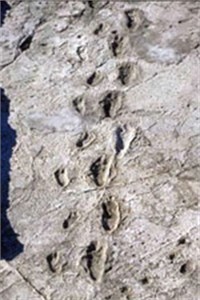
Important hominid trace fossils are the Laetoli footprints, imprinted in volcanic ash.

The geologic time scale shows the history of life on earth, as determined by the fossil record.

The totality of fossils and their placement in fossiliferous (fossil-containing) rock formations and sedimentary layers (strata) is known as the fossil record.

Trace fossils are found in abundance in rocks from the upper part of the Ediacaran period, some 550 million years ago, with the earliest occurrences in the Proterozoic (more than 1 billion years ago).

The incompleteness of the fossil record is one explanation given for this, as well as rapid speciation via punctuated equilibrium.

In 2006, a fossil fish (Tiktaalik roseae) was found in northern Canada that appeared to bridge the gap between fish and tetrapods (four-legged vertebrates), looking like a cross between a fish and a crocodile.

Another name for trace fossils is ichnofossils, taken from the Greek word "ichnos," meaning "trace."

Paleontology is the study of the developing history of life on Earth, of ancient plants and animals, based on the fossil record.

Living fossil is a term used for any living species that closely resembles a species known from fossils.
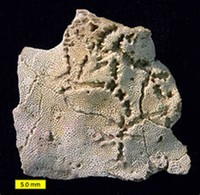
When all that is left is an organism-shaped hole in the rock, it is called a mold fossil or typolite.

Tetrapod footprints, worm trails, and the burrows made by clams are all trace fossils.

Some fossils have been considered to be transitional fossils—having characteristics that appear to be between the (assumed) ancestral and descendant forms.
The remains of a Hadrosaur are an example of a body fossil, or fossils of the actual organism. Typically, hard structures like bones, shells, and teeth fossilize more often than soft-bodied structures like tissues or plant leaves, but as is seen with the horsetail relative, plants can become fossils.Jan 4, 2016
A fossil is the naturally preserved remains or traces of animals or plants that lived in the geologic past. There are two main types of fossils; body and trace.
Noun. (plural cast fossils) A fossil formed when an animal, plant, or other organism dies, its flesh decays and bones deteriorate due to chemical reactions; minerals gradually enter into the cavity, resulting in a cast, also called a mold fossil, which is in the general form of the original organism.
FOSSILS ARE IMPORTANT FOR US FOR SEVERAL REASONS. THEY ARE THE BASIS FOR THE ORGANIZATION OF THE GEOLOGIC TIME TABLE. The appearance and disappearance of organisms throughout time is how we divide up the earths history into different periods. THEY PROVIDE EVIDENCE THAT EVOLUTION IS TAKING PLACE.
Body fossils are the most common type of fossil found across the world. They are formed from the remains of dead animals and plants. Most body fossils are of hard parts such as teeth, bones, shells, or woody trunks, branches, and stems.


